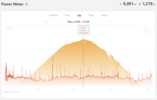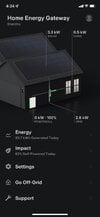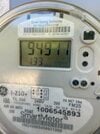Our solar panels (originally installed by Solar City about 15 years ago), have been maintenance free since installation. However, I'm not sure if something needs to be looked at now, or if there may be an issue with the PG&E meter. We have a smaller solar system, and use more electricity than we generate (especially since buying a Model Y two years ago).
Our PG&E bill (Jan 5 - Feb 3, 2022) states a net generation of 146.0315 kWh.
The Tesla app (for the full month of January) states we generated 234.8 kWH. Granted, there is some overlap between the two time periods, but not much. Does this look normal? If we generated ~234 kWh, then why does PGE only show we generated ~146 kWh? That's about a 40% difference!
What am I missing??
Our PG&E bill (Jan 5 - Feb 3, 2022) states a net generation of 146.0315 kWh.
The Tesla app (for the full month of January) states we generated 234.8 kWH. Granted, there is some overlap between the two time periods, but not much. Does this look normal? If we generated ~234 kWh, then why does PGE only show we generated ~146 kWh? That's about a 40% difference!
What am I missing??
Last edited:





